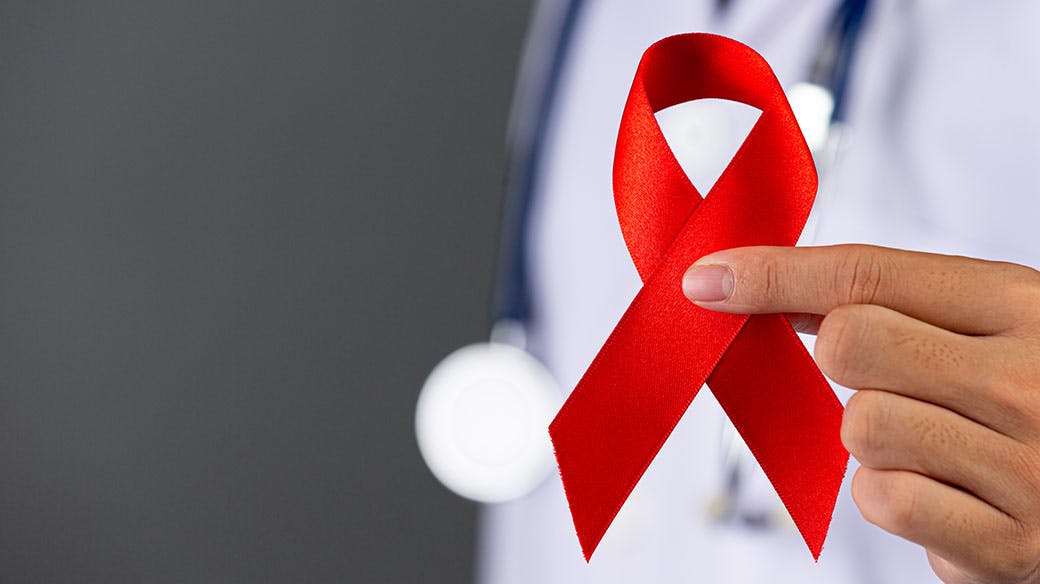While most of us know that HIV and AIDS aren’t the same thing, fewer of us understand what the actual differences are. So, let’s explain.
Differences between HIV and AIDS
To appreciate the differences between HIV and AIDS, we must first get to know the virus known as HIV i.e., the Human Immunodeficiency Virus. If HIV gets into the body, it undermines the immune system. The symptoms immediately following contamination are similar to flu and go away on their own. This is why an infected person doesn’t find out that they have the virus until they are tested. If the infected person takes antiviral drugs and symptom suppression medications in good time after infection, they will be able to continue enjoying a good quality of life. However, if they aren’t tested soon enough to receive timely treatment, HIV will develop into advanced symptoms known as Acquired Immunodeficiency Syndrome, or AIDS. At this point, the immune system begins to be progressively destroyed and unable to resist various complications.
Therefore, the main difference between HIV and AIDS is in the functioning of the immune system. Those with HIV but not yet AIDS have a chance to restore and maintain their immune system at a level that can fight the virus. However, once a patient’s HIV positivity has evolved into AIDS, they are highly susceptible to illness as their immune system is unable to function as it could prior to infection.
3 stages of HIV infection
HIV is transmitted through bodily fluids, including blood, vaginal secretions, semen and breast milk. Most infection occurs during sex and from sharing syringes or tattoo needles. In addition, an infected mother can pass the virus to her child through her blood during pregnancy and through breast-feeding the baby. However, such transmission can be prevented if anti-HIV medication is taken. Saliva does not contain HIV unless the infected person has a mouth ulcer that bleeds, in which case infection risk is still low. Once HIV gets into the body, there are three stages of infection as defined by the levels of infection-fighting white blood cells, or CD4, as measured by blood testing, as follows:
1. Acute HIV infection. A CD4 count of at least 500 cells per cubic millimeter. This is the first stage after exposure at 2-4 weeks. The virus spreads rapidly around the body and can be easily communicated to others through the above-mentioned means. The infected person will have flu-like symptoms such as sore throat, fever, headache, muscle and joint pain, and rash, all of which are manifestations of the body's response to HIV.
2. Chronic HIV Infection (asymptomatic HIV infection or clinical latency). During this phase, an infected person can also infect others. Their CD4 level will be 200-500 cells per cubic millimeter. Though infected, the body doesn’t show symptoms because of the low rate of multiplication of the virus. Patient can therefore stay at this stage for up to 10 years before entering stage three.
3. AIDS. At this stage, the patient’s CD4 count is usually lower than 200 cells per cubic millimeter. This is when patients having AIDS. The body’s natural immunity is lost leaving it easily infected. Treatment tends to be ineffective, complications multiply, and if symptoms do go away, they return repeatedly with ever greater severity until, mostly likely, death.
So, we see that first stage symptoms are similar to other medical conditions, and second stage symptoms are asymptomatic. That means there is a very high chance that the infected person isn’t yet aware that they have HIV. The only way they find out is if they have a blood test. This is why doctors recommend in most cases that those at risk or who have risky behaviors get tested regularly.
HIV testing procedure
Blood testing for HIV involves determining three things:
· CD4 white blood cell count to measure the extent of HIV infection;
· VL (viral load) test;
· NAT (nucleic acid test) for HIV-infected genetic material.
HIV and AIDS treatment guidelines
There are no drugs or treatments as yet that can completely eliminate HIV. The most effective medications so far available are Antiretrovirals (ARV) which inhibit the virus’s ability to divide and multiply. The sooner an HIV-infected person starts taking ARVs, the better will be their resistance to the spread of infection. If ARVs are taken continuously and the infected person takes good care of their health, they will be able to avoid AIDS for the rest of their life.
HIV-infected people who don’t start taking ARVs in time have a high chance of progressing to AIDS, at which point the body will have very little immunity to all kinds of infections. All that can then be done is to treat the specific symptoms of each infection as effectively as modern medical science is able to.
Complications of AIDS
Complications in AIDS patients can occur in many body systems as the immune system can't work as efficiently as it should. Fungal infection, cytomegalovirus bacteria, tuberculosis, pneumonia, cancer and other medical conditions and diseases can proliferate. Not to mention risk of psychiatric illnesses such as depression.
Self-awareness is the best way to prevent HIV and AIDS. If you know you’ve been exposed to risk, get tested for HIV as soon as possible in order to head off AIDS before it gets started. It also helps to be aware that pre-emptively taking a PrEP (Pre-Exposure Prophylaxis) orally ahead of exposure to HIV and taking a PEP (Post-Exposure Prophylaxis) after potential exposure help keep your defenses against infection up. Both are important ways of preventing HIV infection and avoiding developing AIDS.
Krungthai-AXA life insurance customers can find many more articles on a wide range of health and medical topics at www.krungthai-axa.co.th/th/health-advisories
References
· Faculty of Medicine, Ramathibodi Hospital, Mahidol University
https://www.rama.mahidol.ac.th/atrama/issue039/health-station
· Bumrungrad Hospital
https://www.bumrungrad.com/th/health-blog/november-2016/hiv-aids-infection-treatment
· King Chulalongkorn Memorial Hospital, the Thai Red Cross Society
https://bit.ly/3SqEdkG
· Petcharavej Hospital
https://www.petcharavejhospital.com/th/Article/article_detail/hiv_aids
· Pobpad website
https://bit.ly/3zvarT5
https://bit.ly/3pb0w0h
https://bit.ly/3AWKEF4


